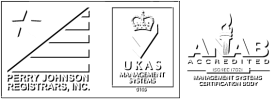|
General Application Chart for Vacuum Lifters
A Brief List of Materials and Applications suited to the many styles of Vacuum Lifters available
As ANVER builds all types of vacuum lifters, we designed this chart to help you narrow down the many possibilities. This is only a starting point so feel free to contact your local dealer or ANVER for further information on a vacuum lifter suited to your specific application. We would be glad to explain the pros and cons of each system as it pertains to your needs.
|
Lifter Choice Considerations:
| • |
The Material and its Porosity |
| • |
Surface Texture – Flex |
| • |
Weight – Min. and Max. |
| • |
Movements Needed |
| • |
Power Available |
|
For Loads
up to a
Maximum
Normal
Capacity
of: |
| Non-Porous |
 |
|
| Semi-Porous |
 |
|
| Porous |
 |
|
Smooth
Surface |
Semi-
Textured |
Rough
Textured |
Smooth
Surface |
Semi-
Textured |
Rough
Textured |
Smooth
Surface |
Rough
Textured |
Flexible
Material |
Metals,
Glass*
Sheet
Plate |
Embossed
Metal
Plastic
Fiberglass |
Ribbed,
Metal
Tread Plate |
Finished Wood
Polished Stone |
Embossed,
Textured
Surfaces
Composites |
Ply Wood,
Saw-Cut Stone |
Concrete
Particle
Board
Foam |
Rough,
Wood Flamed
Stone |
Cardboard
Boxes
Bags |
| Cups Used > |
Standard |
Special |
Foam |
Standard |
Special |
Foam |
Special |
Special |
Special |
Mechanical Self Powered Lifters
Horiz, Sheet/Plate (not glass*) |
18,000 lb
8,165 kg |
XXXX |
– |
– |
– |
– |
– |
– |
– |
– |
Electric AC Powered Lifters
All movements and most Loads |
60,000 lb
27,216 kg |
XXX |
XXX |
XXX |
XXX |
XXX |
XX |
X |
X |
– |
Battery DC Powered Lifters
Mostly for glass installation |
+/-5,000 lb
2268 kg |
XXX |
X |
– |
XX |
– |
– |
– |
– |
– |
Air Powered Lifters
All movements and most Loads |
+/-5,000 lb
2268 kg |
XXX |
XXX |
XXX |
XXX |
XXX |
XXX |
XX |
XX |
X |
Ergo-Tube Lifting Systems
Horiz, Vertical, Tilting Loads |
600 lb
272 kg |
X |
X |
X |
XX |
XX |
XX |
XXX |
XXX |
XXXX |
VB High Flow Systems
Horiz, Vertical, Tilting, Side-Grip |
1000 lb
454 kg |
X |
X |
X |
XX |
XX |
XX |
XXX |
XXX |
XXX |
VM Low Flow Systems
Horiz, Vertical, Tilting, Side-Grip |
550 lb
250 kg |
XXX |
XXX |
X |
XX |
XX |
X |
– |
– |
– |
|
XXXX
XXX
XX
X
–
|
=
=
=
=
= |
Excellent – The primary choice of Lifter for the application.
Better – Works for about all applications shown.
Good – OK for most applications but other choices may have a performance or economical advantage.
Possible – But not the best or most economical choice – sometimes what results in dual use Lifters.
Not Suitable – will not work without modifications that are uneconomical. |
* Mechanical Lifters are not used on glass as it is normally stored and handled vertically.
| ANVER Vacuum Lifters comply fully with and meet the standards of US ANSI ASME Standard B30.20 for below-the-hook lifting devices, as well as complying with OSHA and most European requirements. Click here for more information on these safety standards.

|
|























